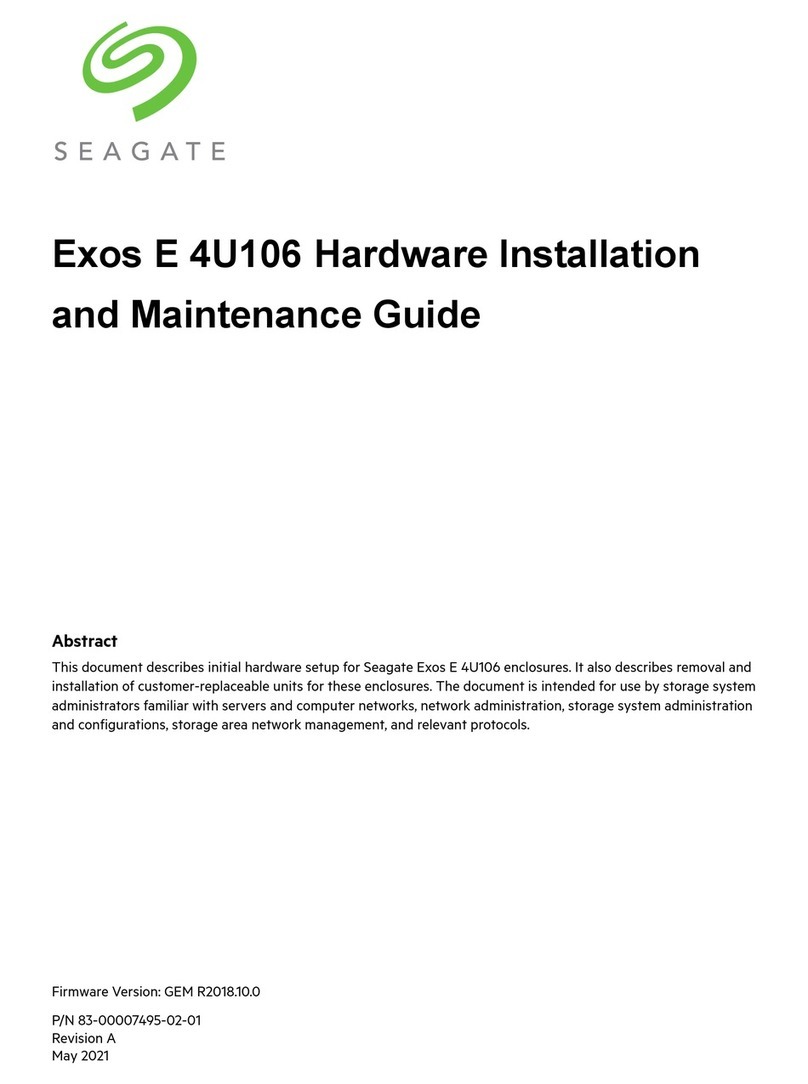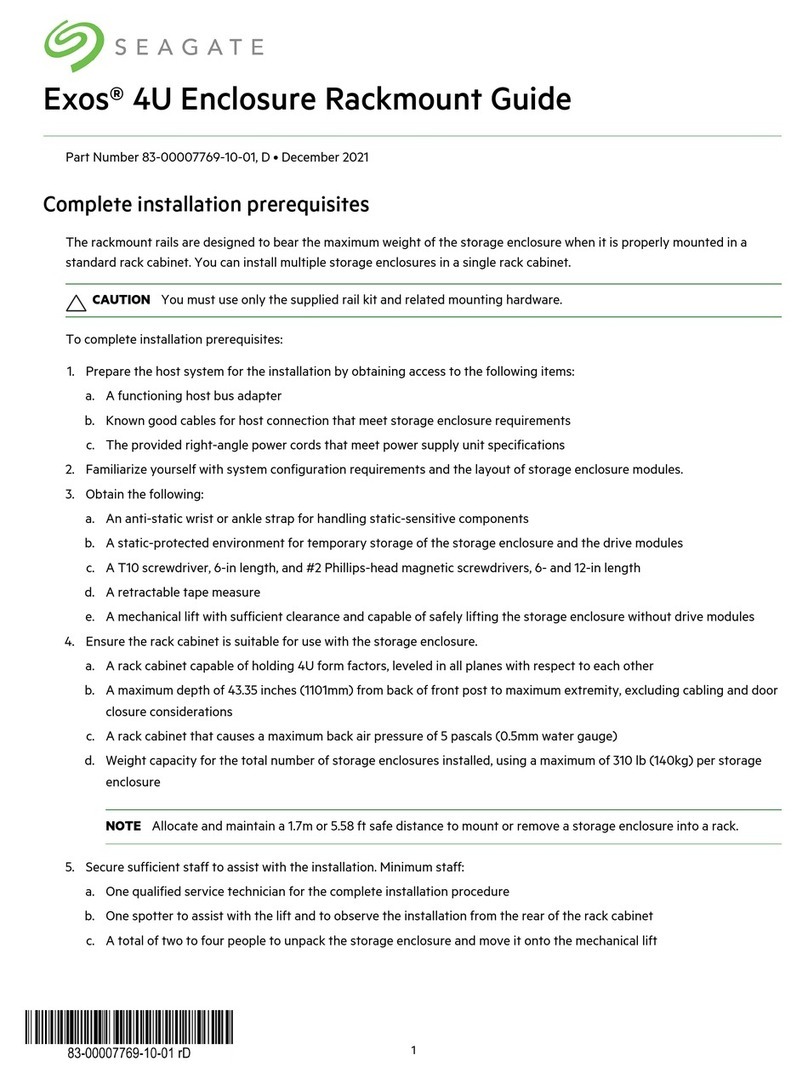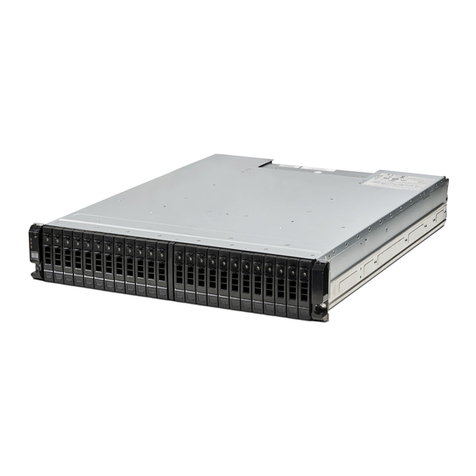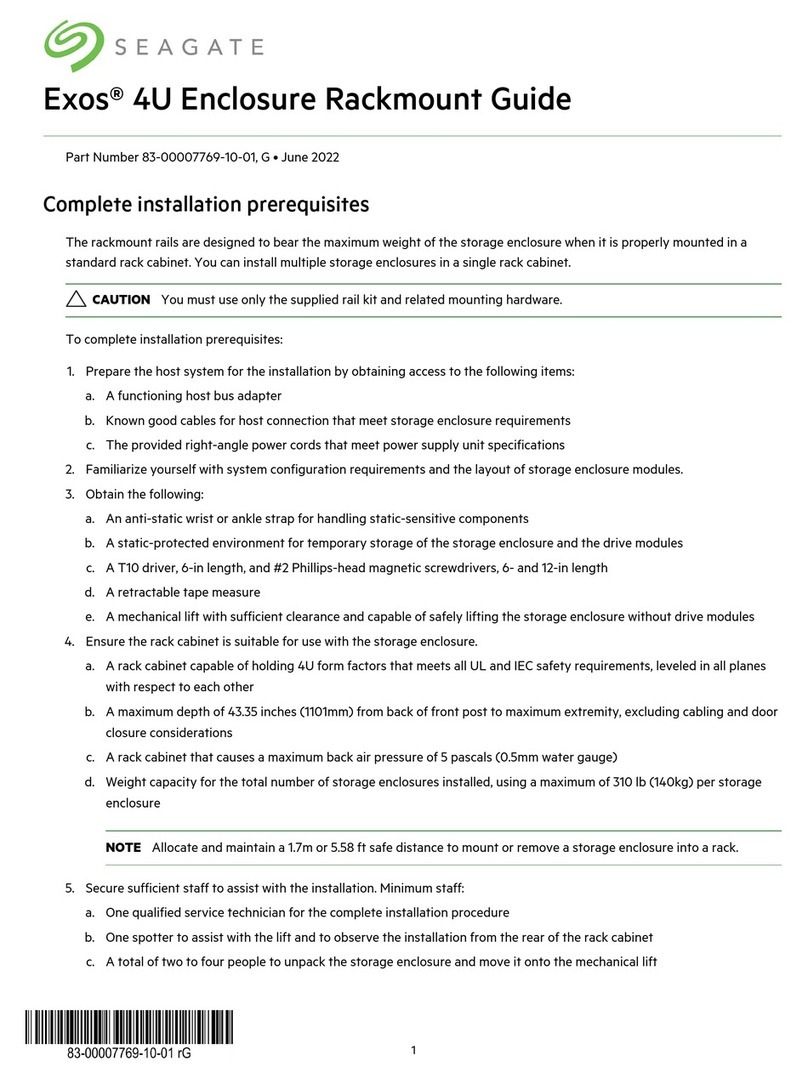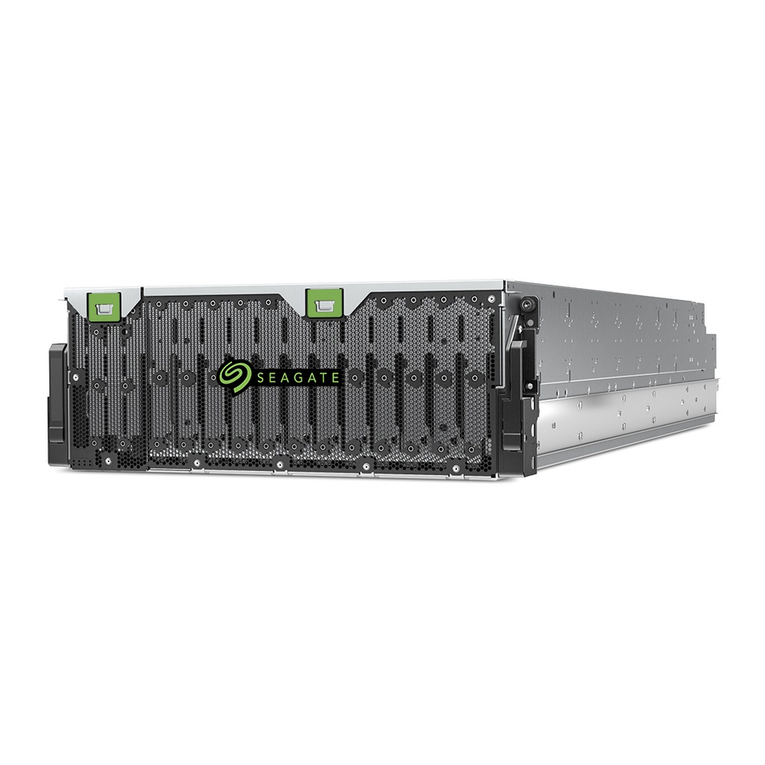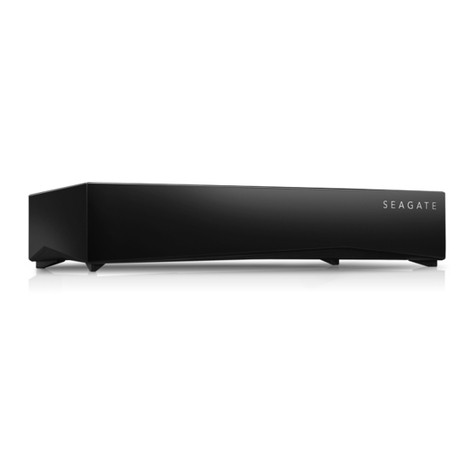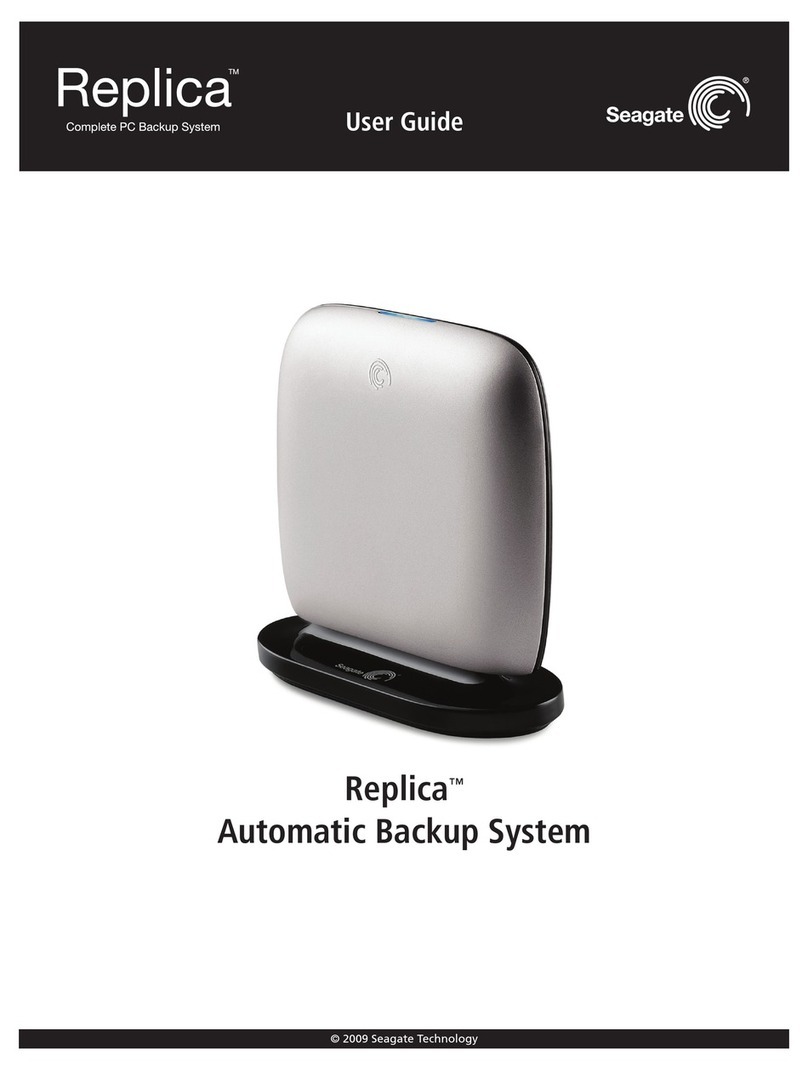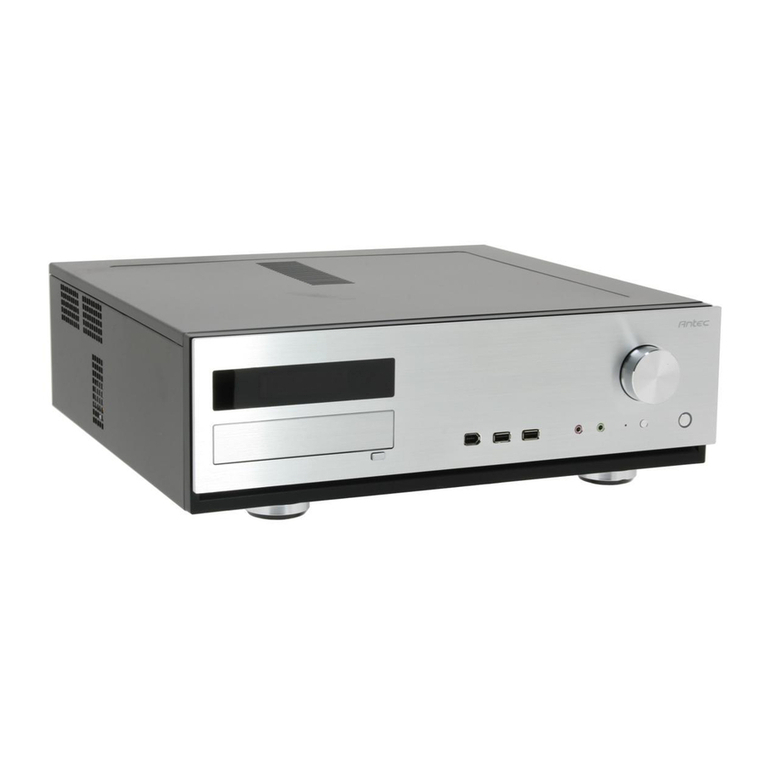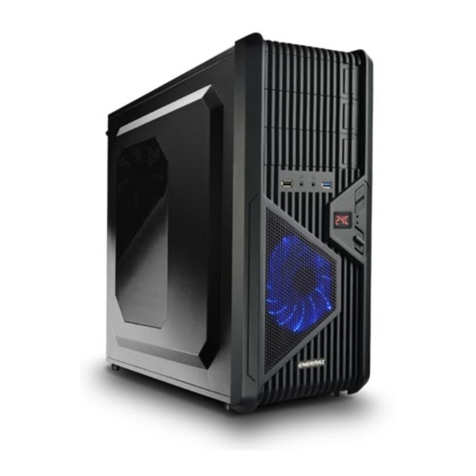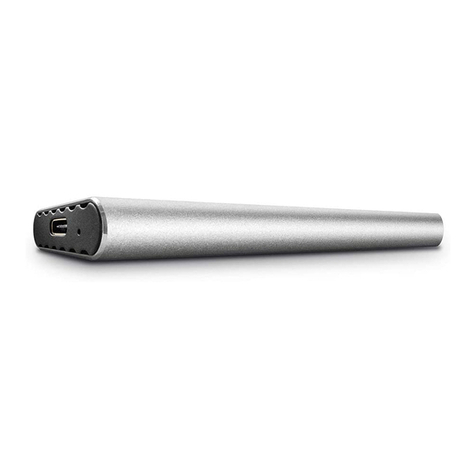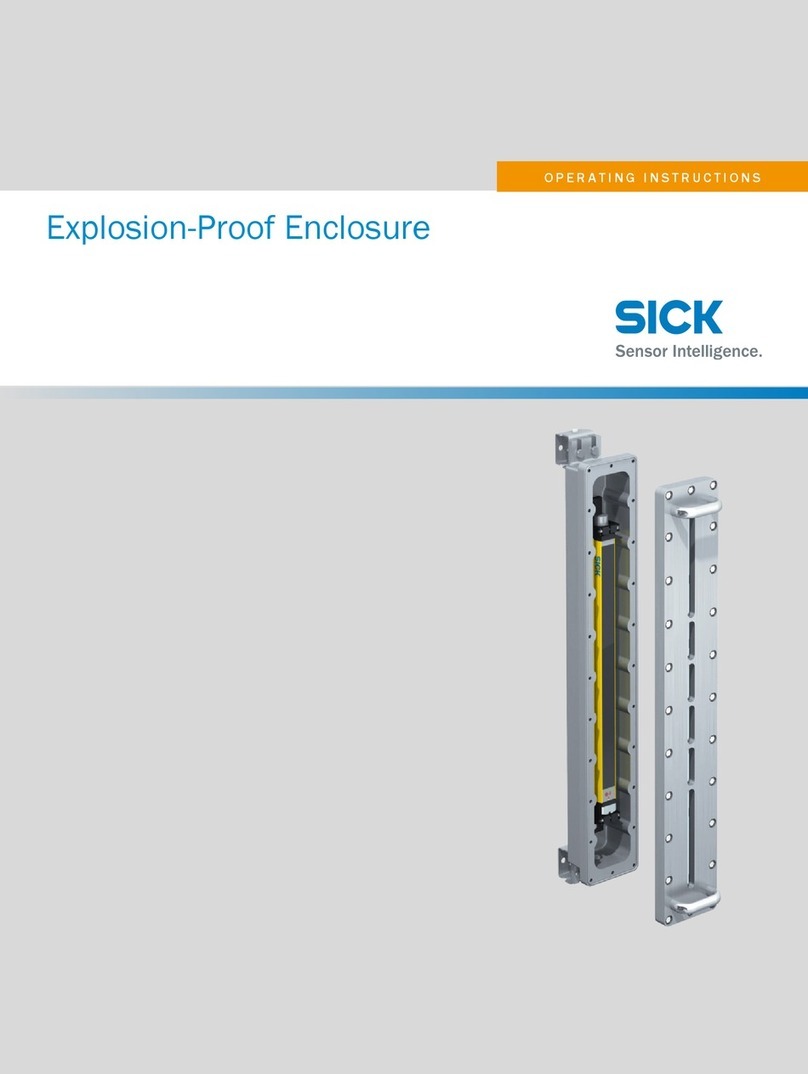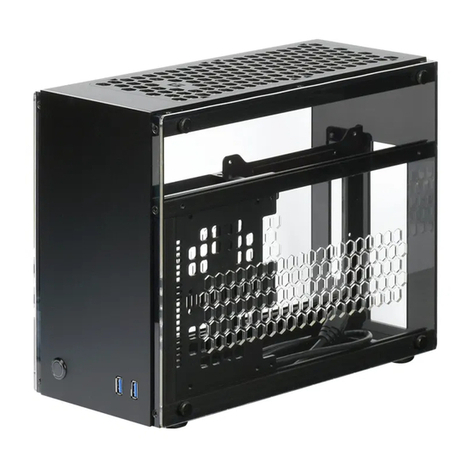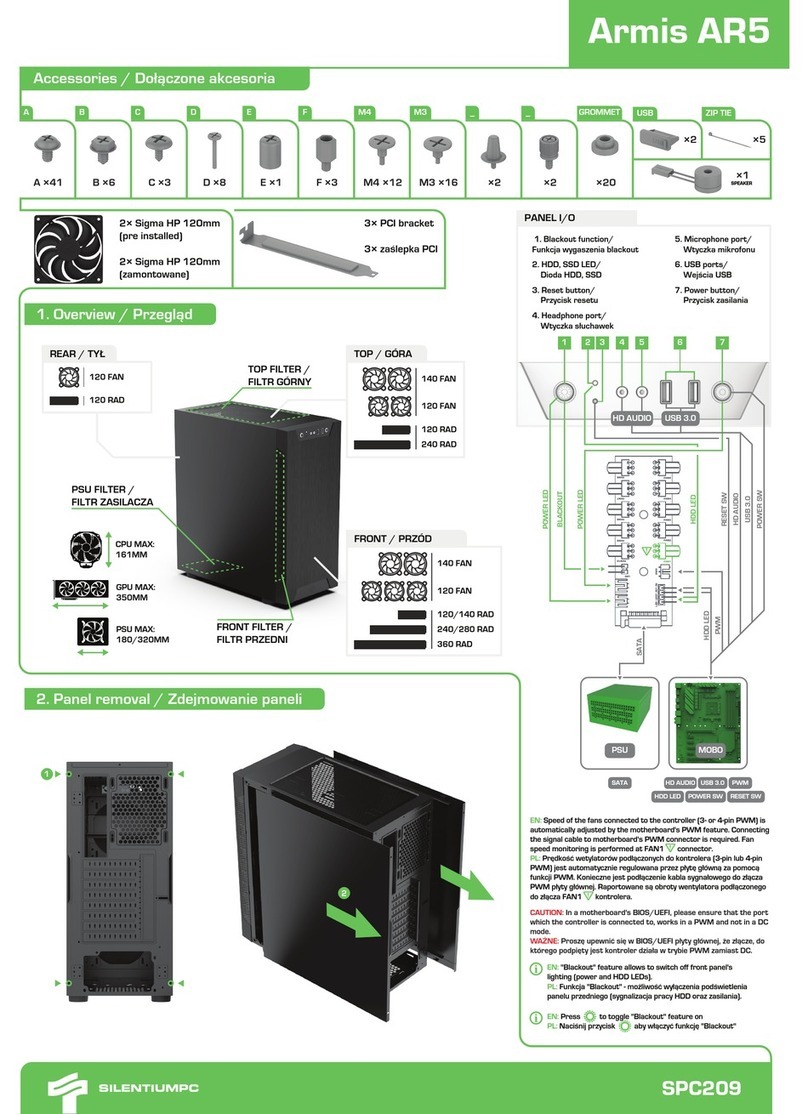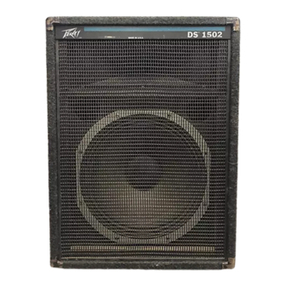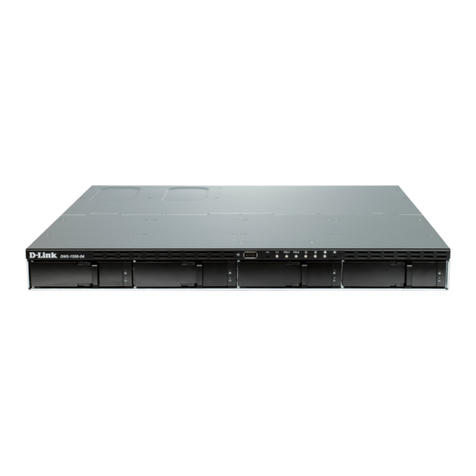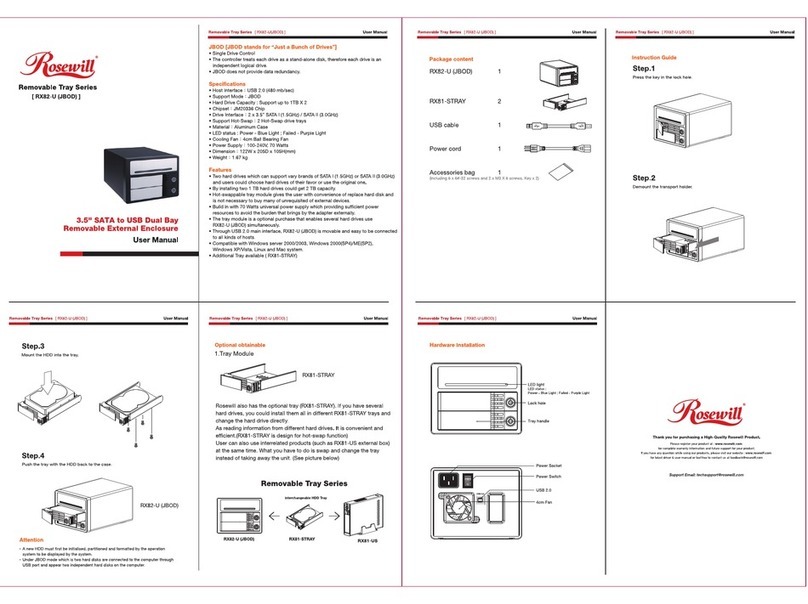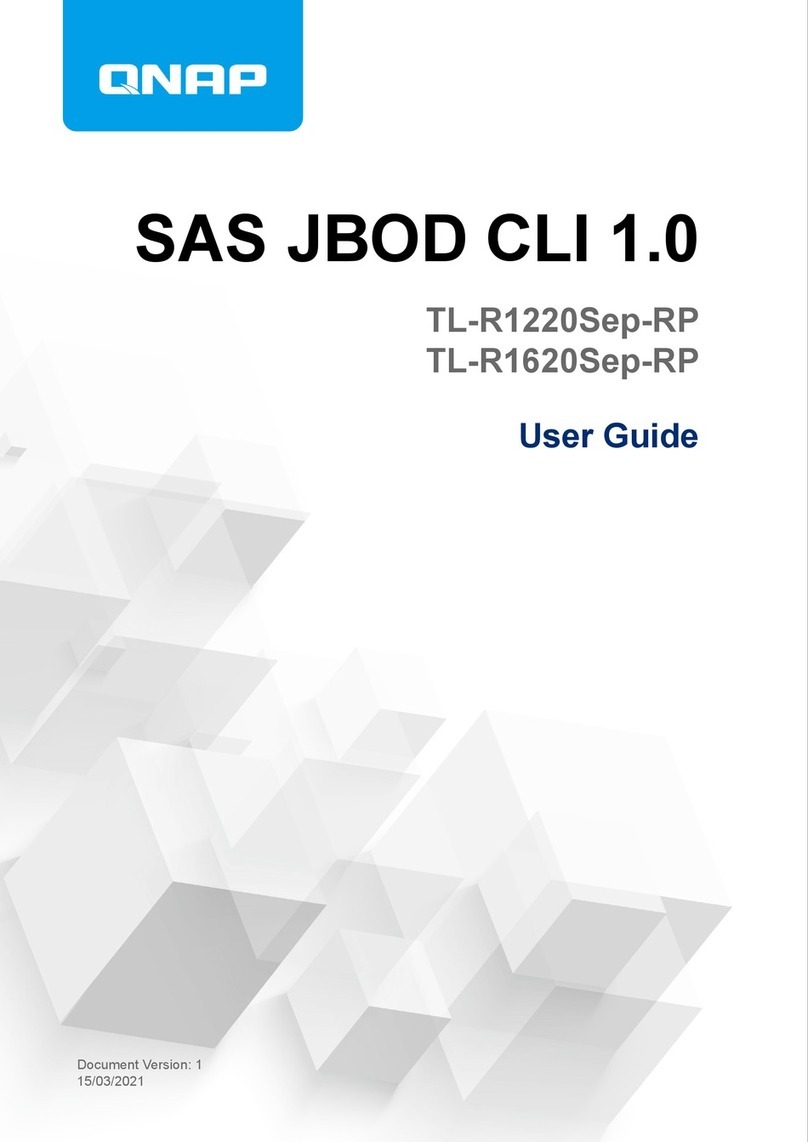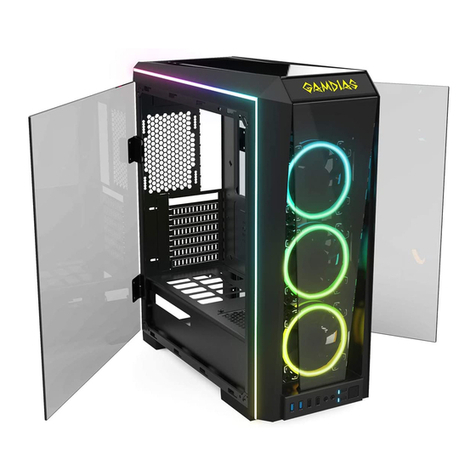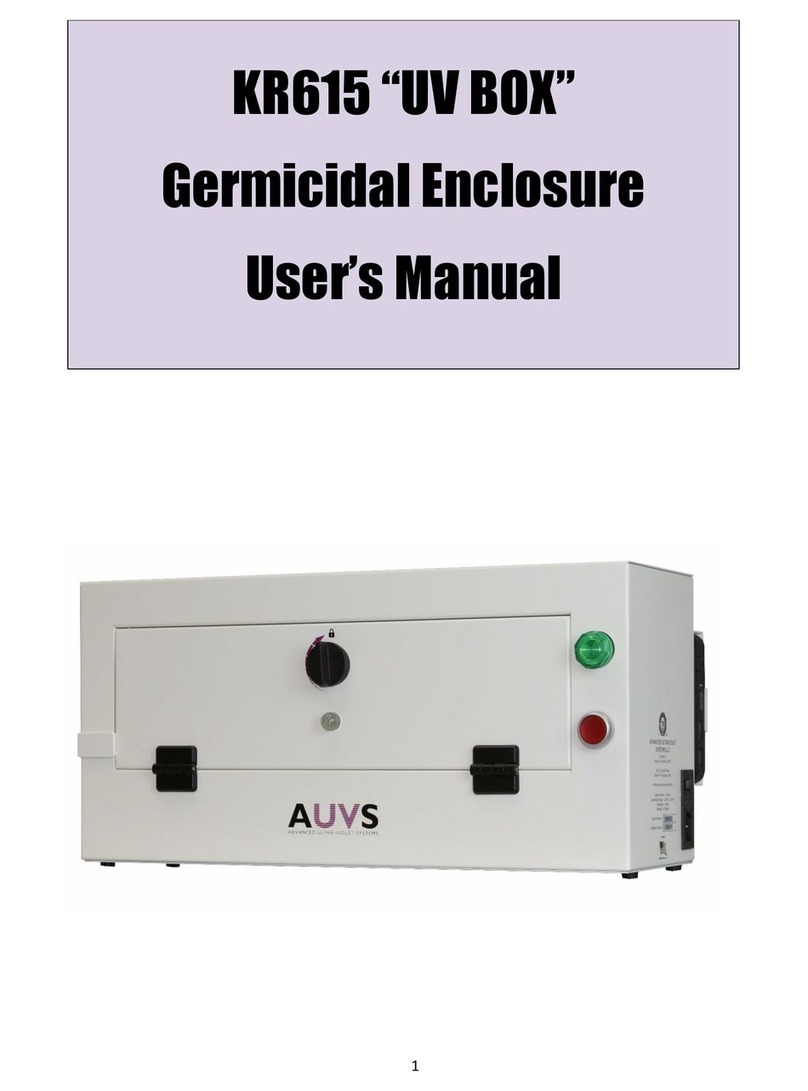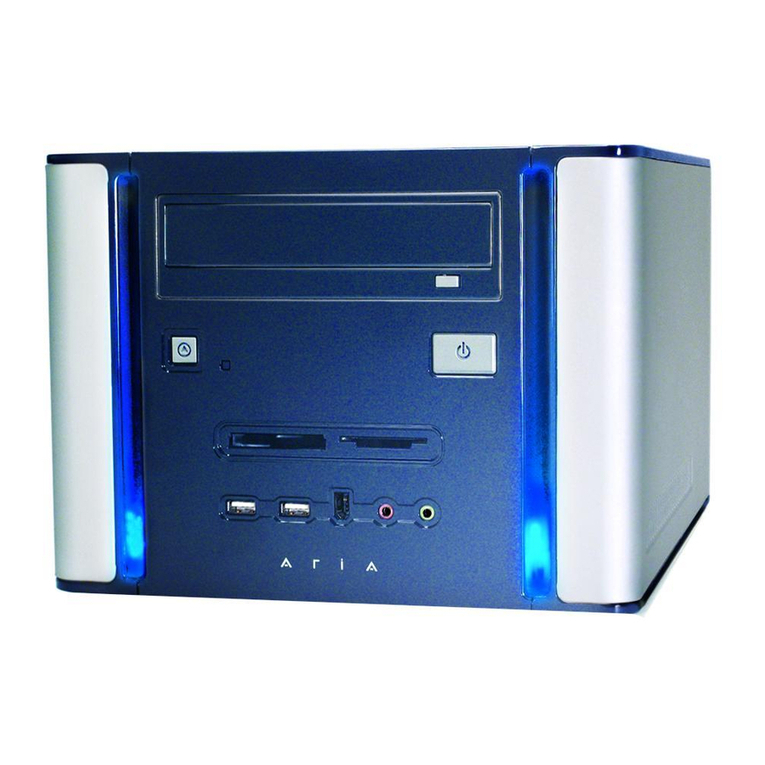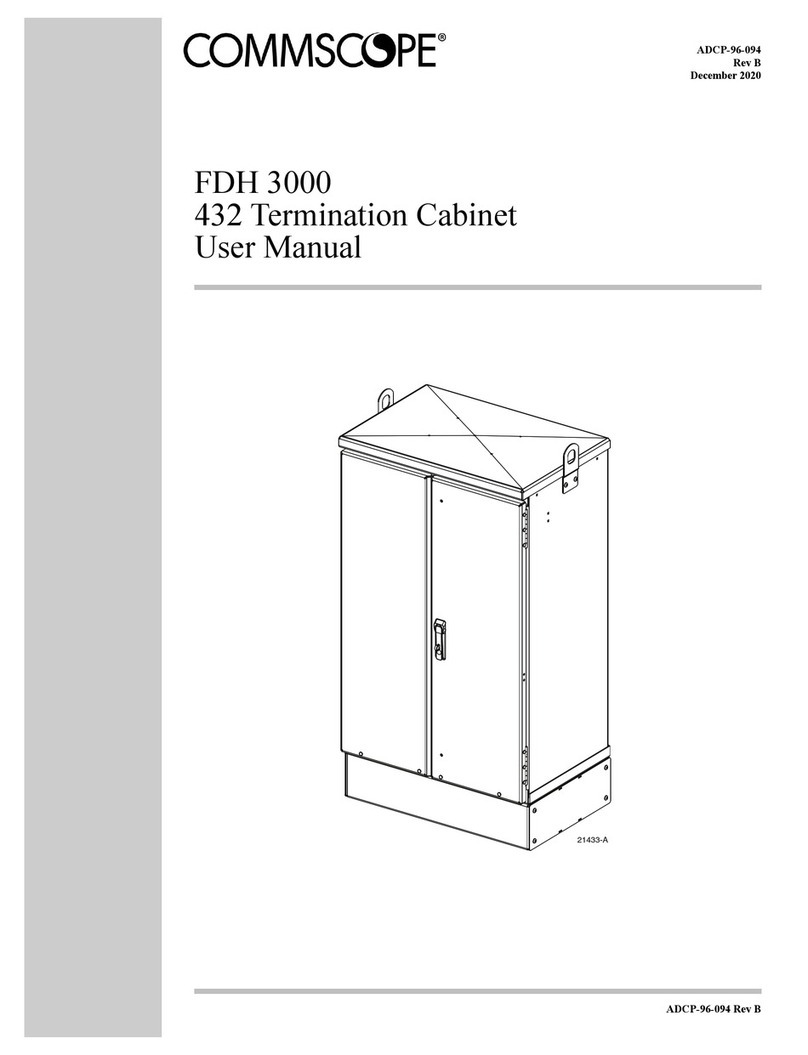
Contents 5
Figures
Figure 1 Storage enclosure with rails 10
Figure 2 Customer-replaceable FRUs, top view 11
Figure 3 Storage enclosure PCBAs 12
Figure 4 Default belt straps already around the storage enclosure 16
Figure 5 Optional lift handles attached to the storage enclosure 16
Figure 6 Left and right lift handles 17
Figure 7 Separated left rail assembly, inner sides facing 19
Figure 8 Extension of left inner rail beyond mid rail 20
Figure 9 Location of inner rail safety lock 20
Figure 10 Location of mid rail release switch lever 21
Figure 11 Distance measurement of rack inside post-to-post depth 22
Figure 12 Default location of outer rail adjustment setscrews 22
Figure 13 Measurement of rail from rear to front mount bracket 23
Figure 14 Sample adjusted distance for outer rail setscrews 23
Figure 15 Alignment of CMA B bracket to rear outer rail bracket holes alignment and attachment 24
Figure 16 Attach the rear of the outer right rail assembly 25
Figure 17 Right front post detail of the inserted outer right rail assembly 26
Figure 18 Location for cage nut near top of allocated 4U space 27
Figure 19 Left and right inner rail edge details 28
Figure 20 Left inner rail alignment to storage enclosure chassis 28
Figure 21 Lock of rail against T-pins, alignment of screw holes to chassis sidewall 28
Figure 22 Attachment of the CMA A bracket 29
Figure 23 Align inner rails with mid and outer rails, detail 30
Figure 24 Leaf spring latch engaged, extension of mid rail to fully forward and locked position 31
Figure 25 Release both safety lock latches 32
Figure 26 Attachment of the CMA bracket assembly to the CMA A bracket on the chassis 33
Figure 27 Insertion of CMA bracket assembly into CMA B bracket on the outer rail 34
Figure 28 Proper installation of the CMA bracket assembly 34
Figure 29 Direction to tighten crossbar thumbscrews 35
Figure 30 Location for insertion of rack ear transport screws 35
Figure 31 Location for insertion of crossbar transport screws 36
Figure 32 Front half of unpopulated main bay 37
Figure 33 Orient drive carrier handle to rear 37
Figure 34 Required installation of first complete row of drive carriers 38
Figure 35 Rear half of unpopulated main bay 38
Figure 36 Auxiliary bay latch 39
Figure 37 Location of cable capture clip release screw 41
Figure 38 Power cord routing up to cable capture clip 41
Figure 39 Final power cord routing 42
Figure 40 Open cable capture arms on chassis 43
Figure 41 Proper order of data cables 43
Figure 42 Route for sample data cables on either side of the CMA cable capture arm 44
Figure 43 Sample HBA data and management connections 45
Figure 44 Sample reverse cabling method among host switches and expansion modules 46
Figure 45 Sample invalid loop (in red) among host switches and expansion modules 47
Figure 46 Close all CMA bracket clips 48
Figure 47 Route power cables to redundant PDUs 50
Figure 48 Front panel LEDs 51
Figure 49 Input/output module LEDs 52
Figure 50 Ports on sample controller module 53
Figure 51 Drive fault LED on top panel 61
Figure 52 SAS expander module LEDs, component side 61
Figure 53 Controller fan module fault LED, rotated orientation 62
Figure 54 System fan module fault LED 63
